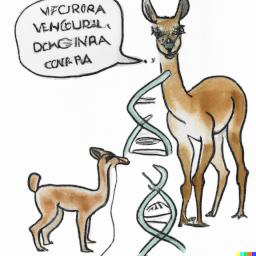Viguno (Versatile Interface for Genetics Utilization of Nice Ontologies) is the component of a VarFish installation that provides information on HPO phenotypes, diseases, and their relation to genes.
Viguno provides a REST API.
The commands used below assume that you have a viguno executable on your machine (e.g., via cargo install).
However, we also provide Docker images.
You can run version v0.1.1 as follows.
We assume that the current working directory is a check of viguno so we have a copy of the HPO and HGNC xlink table in tests/data.
We bind-mount this into the container with -v $PWD/tests/data:/data.
# docker run \
-v $PWD/tests/data:/data \
-it ghcr.io/varfish-org/viguno:0.1.1
The initial step is to download the official HPO data to a local directory. We fix ourselves to the release from 2023-06-06.
# RELEASE=2023-06-06
# URL=https://github.com/obophenotype/human-phenotype-ontology/releases/download
# NAMES="hp-base.obo phenotype.hpoa phenotype_to_genes.txt genes_to_phenotype.txt"
# mkdir -p /tmp/data/hpo
# for name in $NAMES; do \
wget \
-O /tmp/data/hpo/$name \
$URL/v$RELEASE/$name;
done
# mv /tmp/data/hpo/hp-base.obo /tmp/data/hpo/hp.obo
# sed -i -e 's|/hp-base.owl||' /tmp/data/hpo/hp.obo
Next, generate the cross-link file between different gene identifiers.
# wget -O /tmp/hgnc_complete_set.json \
https://ftp.ebi.ac.uk/pub/databases/genenames/hgnc/json/hgnc_complete_set.json
# echo -e "hgnc_id\tensembl_gene_id\tentrez_id\tgene_symbol" \
> /tmp/data/hpo/hgnc_xlink.tsv
# jq -r '.response.docs[] | select(.entrez_id != null) | [.hgnc_id, .ensembl_gene_id, .entrez_id, .symbol] | @tsv' \
/tmp/hgnc_complete_set.json \
| LC_ALL=C sort -t $'\t' -k3,3n \
>> /tmp/data/hpo/hgnc_xlink.tsv
You can now conver the downloaded text HPO files to a binary format which will improve performance of loading data.
# viguno convert \
--path-hpo-dir /tmp/data/hpo \
--path-out-bin /tmp/data/hpo/hpo.bin
After having the precomputed data, you can startup the server as follows:
# viguno server run \
--path-hpo-dir tests/data/hpo
INFO args_common = Args { verbose: Verbosity { verbose: 0, quiet: 0, phantom: PhantomData<clap_verbosity_flag::InfoLevel> } }
INFO args = Args { path_hpo_dir: "tests/data/hpo", suppress_hints: false, listen_host: "127.0.0.1", listen_port: 8080 }
INFO Loading HPO...
INFO attempting to load binary HPO file from tests/data/hpo
INFO ...done loading HPO in 4.788750172s
INFO Loading HGNC xlink...
INFO ... done loading HGNC xlink in 156.362034ms
INFO Loading HPO OBO...
INFO ... done loading HPO OBO in 1.90213703s
INFO Indexing OBO...
INFO ... done indexing OBO in 835.558794ms
INFO Launching server main on http://127.0.0.1:8080 ...
INFO SEE SWAGGER UI FOR INTERACTIVE DOCS: http://127.0.0.1:8080/swagger-ui/
INFO starting 8 workers
INFO Actix runtime found; starting in Actix runtime
Now the server is running and you could stop it with Ctrl-C.
You can go to http://127.0.0.1/swagger-ui to see the automatically generated interactive API documentation.
You can find the OpenAPI YAML file for the main branch here on GitHub and e.g., open it here in the public Swagger editor.
The following is for developers of Viguno itself.
We automatically build Docker images using GitHub actions. To do this locally, you can do:
# bash utils/docker/build-docker.sh
You can set the following environment variables
GIT_TAGa git "treeish" (can be a tag or version) to build (inferred viagit describe --tagsby default)DOCKER_VERSIONthe version to use for the Docker label (by default it uses$GIT_TAGand thevprefix will be stripped)



